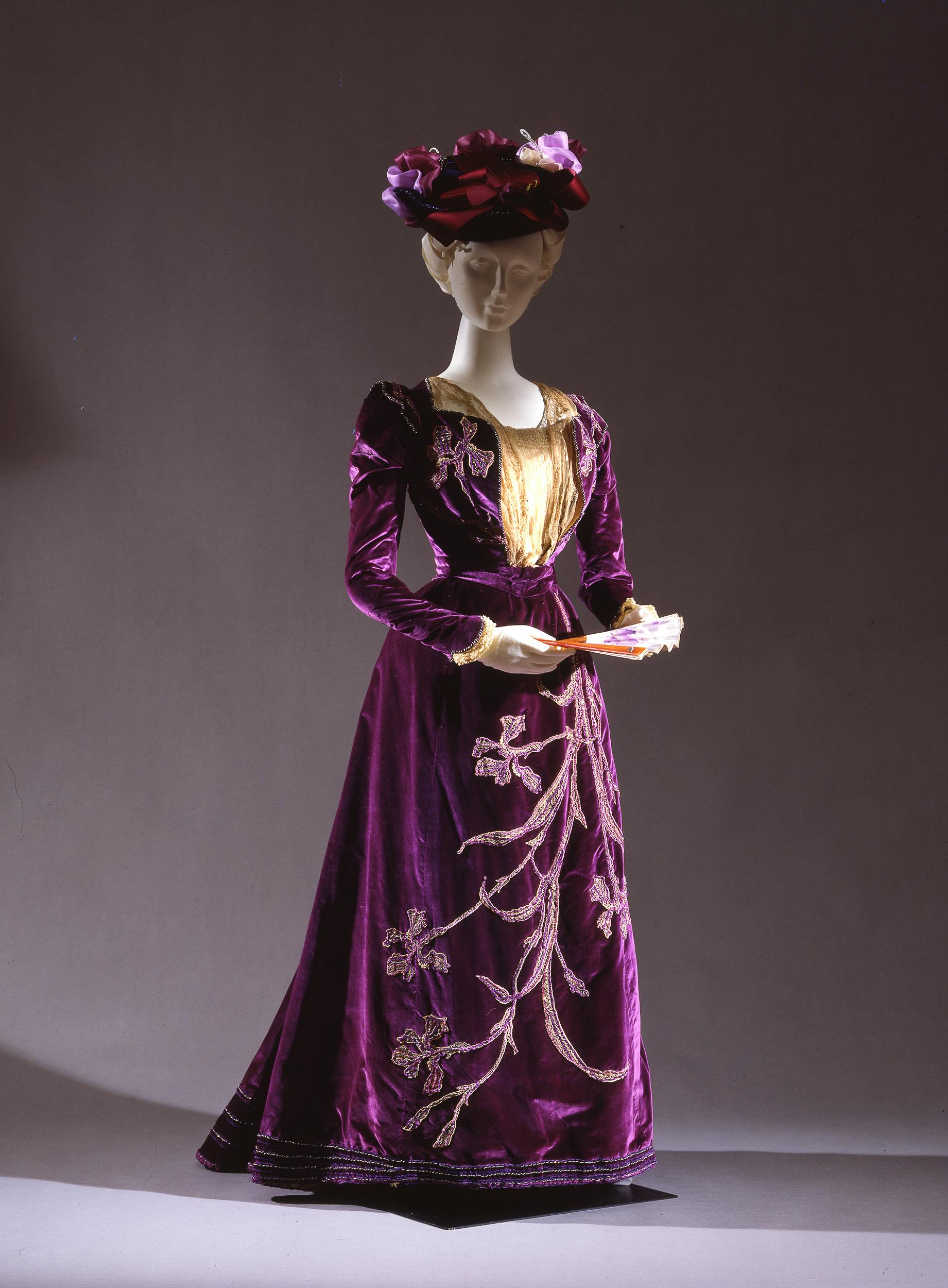Two-piece ceremony dress, bodice and skirt
Purple silk velvet, chemical lace, silk organza
What immediately strikes about this dress are the large irises running along the skirt and up to the bodice. This extensive decoration is achieved by applying to the velvet a chemical lace, which is a type of mechanical lace made using an embroidery machine to create the motif onto a substrate and then dissolving part of it in acid to create the illusion of lace. Therefore, the irises are applied and then finished with a purple and lilac chenille embroidery - a yarn with a peculiar furry look - and with silver beads and sequins. The years between the 1860s and the 1920s were the period of greatest success for embroidery in women's clothing. As the volumes became smaller and the use of textured fabrics - i.e. with different designs inside them - started to be less common, embroidery, together with lace, was increasingly used to give an exceptional nature to the garment. This was also possible thanks to the rapid technological progress, thanks to which the range of machine-made embroidery and lace available on the market significantly expanded in just a few decades.
The bodice of the dress has a deep shaped neckline closed by two bands of mechanical lace and a thickly pleated stomacher in silk organza, both ivory in colour and lined with taffeta of the same colour to prevent any transparency. The capped sleeves, the volume of which gradually decreases from the shoulders to the wrist, are finished with an embroidery at the shoulder and ruffled organza at the wrist, which can extend to cover part of the hand. The skirt is flared and ends with a short train. The hem is finished with a dense hatching of marcasite beads - a mineral with a particular metallic appearance - and chenille, thus echoing the decoration of the dress. The volume of the sleeves, despite being small, is concentrated on the shoulders and emphasised by the wrists, thus allowing to date the dress to the very last years of the 19th century when the fashion of large gigot sleeves (literally lamb leg sleeves), typical of the 1890s, was dying out. The presence of a neckline, albeit small, suggests that the dress was used for formal or evening occasions, such as social gatherings or dinners.
Donation by Roberto Bondi, Florence
It belonged to the daughter of Baroness Paolina Levi
Non-original accessories.
La Galleria del Costume/1, Centro Di, Firenze, 1983, pp 84-85; Roberta Orsi Landini, Abiti in festa. L'ornamento e la sartoria italiana, Sillabe, Livorno, 1996, pp 22-35 e p 87.
